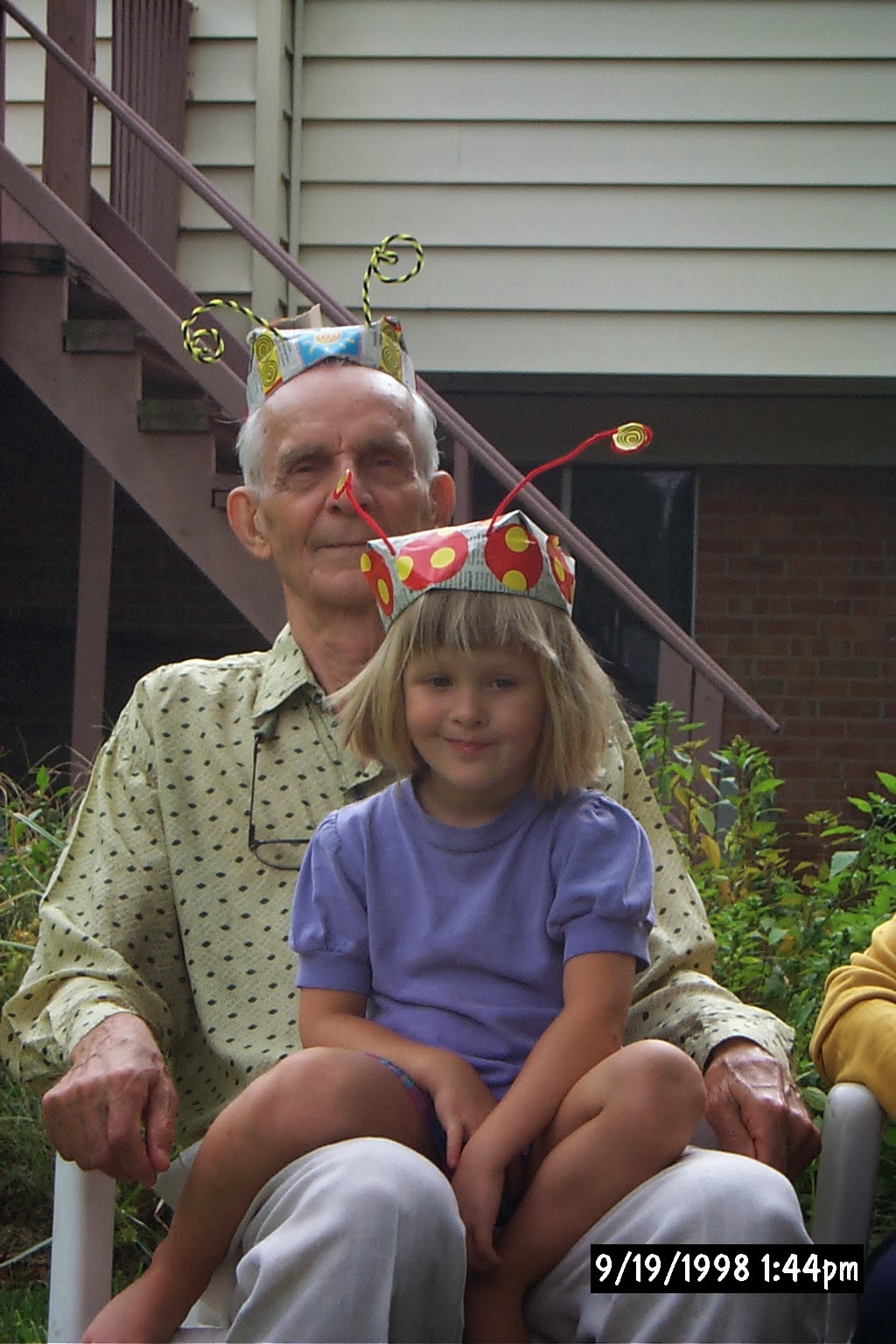It’s mixing-and-matching time—pulling together elements of the last post (on digital prints) and the next-to-the-last (about my father-in-law).
I have used digital cameras for a long time, at least as far back as 1997. The photo of my daughter and her grandfather was taken in late 1998 with a digital camera I can’t recall. I suspect that it was Kodak’s then top-of-the-line 1.6 megapixel shooter, which sold for more than a thousand bucks. A year later, I moved up to Canon’s PowerShot S20, a lightweight (for the time), full-featured 3-megapixel digital camera.
I also have used or owned the Sony MVC-FD75, Olympus C-3030, Kodak DC3200, Casio QV-3000EX, Kodak DC4800, Nikon CoolPix 775, Canon Sony DSC-F828, PowerShot G5, Nikon CoolPix 5200, Canon Digital Rebel, Nikon CoolPix 5900, Nikon D70, and Canon EOS 20D.
Digital camera manufacturers tell tall tales about what size prints the devices’ images can produce. Somehow as the number of megapixels grows greater, the stated sizes of prints shrink for what was state of the art. The 3-megapixel camera of yesteryear supposedly could support big prints, but marketing for newer digicams states smaller sizes for the older device. It’s all marketing, of course, so that some people will buy more megapixels to print bigger.
